Glass GmbH Bauunternehmung: first 2D, then 3D, then BIM
Glass GmbH is a well-known medium-sized construction company with several locations. Thomas Böck, head of construction, reports on his experience in the introduction of BIM-capable 3D software in structural, reinforcement and formwork planning.
Founded in 1948, the Glass Group employs around 750 people at its locations in Mindelheim, Munich, Bad Wörishofen, Leipzig and Berlin. The company, which is active throughout Europe, focuses on industrial construction, building construction and turnkey construction, the construction of paper mills as well as civil engineering and power plant construction.
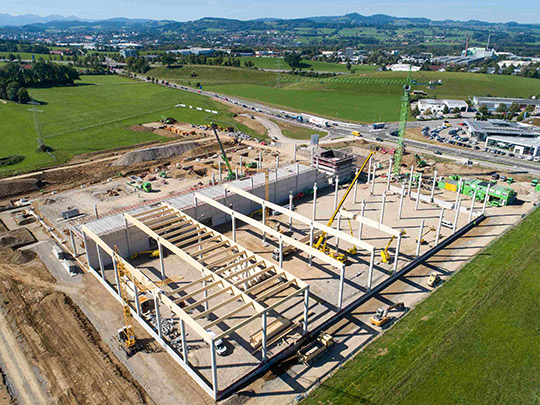
(Photo: Glass GmbH)
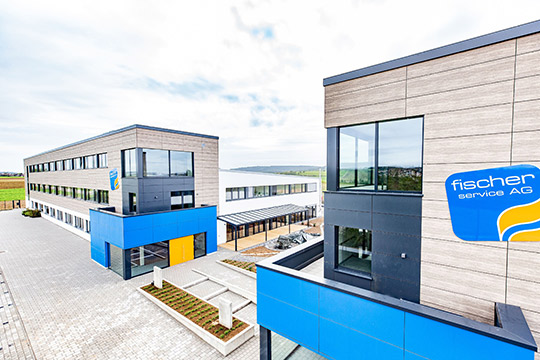
(Photo: Glass GmbH)
To automate processes and data transfers, the planning department decided to switch from a 2D to a new, BIM-capable 3D CAD program. In the meantime, almost all new projects are designed in 3D, including all precast parts, assembly and installation parts and the reinforcement. The software changeover was also an entry into a new technology. For this reason, it was planned particularly carefully by Thomas Böck, responsible for the design department at Glass GmbH.
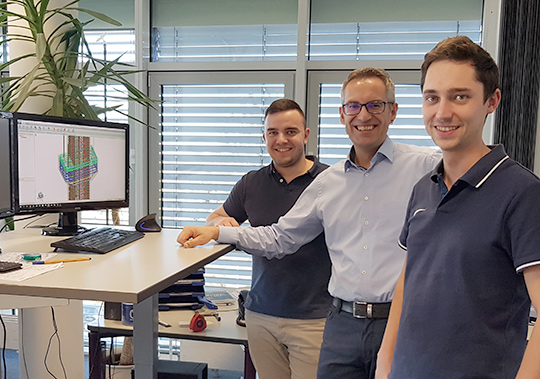
(Photo: Glass GmbH)
How do you switch from 2D to 3D and BIM?
"3D CAD and BIM-compliant planning is now a prerequisite for more and more clients," says Thomas Böck, explaining the reasons for the switch. The program selection was preceded by an intensive test phase. Initially, five programs were invited for in-house presentations. At the end of 2017, two programs were chosen for the final selection - STRAKON from DICAD and a competitor's product. Thomas Böck was aware of the consequences of the program selection: "For the company a bad purchase would have been fatal. Therefore we decided to test both programs extensively over two months on a concrete project".
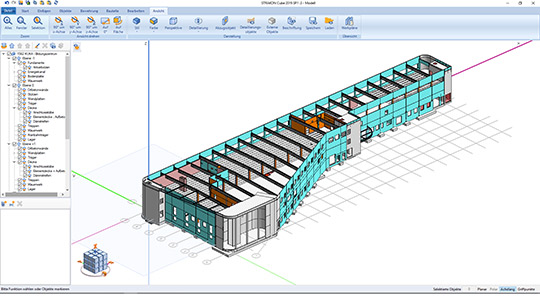
(Photo: Glass GmbH)
It turned out that the competitor's program did have automatisms and prefabricated nodes. However, changes were costly or not possible at all. STRAKON does not have these automatisms, but even complicated detail points can be planned very easily. There were also differences in the dimensional chains: Although dimensional chains could be created automatically, dimensions of complex finished parts had to be reworked manually. In the process, they lost their associativity - and with it the automatic adjustment when changes were made. STRAKON does not have such automatic dimensioning, but associative dimensioning chains can be quickly created manually. "Since we only use the program for carcass planning, overview plans, element and detail plans for precast or in-situ concrete elements and not for architectural planning, the other program was much too extensive for us.
STRAKON quickly convinced us because it is tailored to the body shell, easy to operate and flexible", Böck explains the choice. The program also allows users a lot of freedom in 2D plan creation, which enables a very high plan quality. STRAKON was also able to prevail in a direct comparison when importing and exporting the BIM standard exchange format IFC.
What other selection criteria played a role?
Customer proximity was another selection criterion, says Böck: "Customers are involved in further development and optimization. During the test phase, for example, we suggested a number of improvements which were quickly incorporated into the program".
In addition, an annual working group for STRAKON users takes place at DICAD in Cologne, where users exchange information about the further development of the program. In addition, there are regional user meetings where version innovations and their practical application are presented. Customers can also make contact with other users. "If we were a large software house, we would have had little influence on the program with our 40 or so licenses," says Böck with conviction.
Another selection criterion was the interaction with the ERP system for precast concrete elements used by Glass GmbH, which, according to Böck, works very well. The data transfer via CPIXML interface is important with regard to mass determination and precast element compilations for costing as well as cooperation with work preparation, construction management or accounting.
Modeling and working with prefabricated and built-in parts also works well and structured with STRAKON, as does the creation of plans. The reinforcement and dimension connection to the formwork speeds up the creation and modification of precast element plans: the reinforcement adapts automatically as soon as the geometry changes. According to Böck, STRAKON is not yet used for formwork planning. "However, since we will soon be purchasing a 5-axis woodworking machine, we will probably also acquire the module for formwork planning", he reveals.
The transfer of the 3D geometry to the sandwich panel design program, the design and import of the calculated built-in parts into STRAKON also works well. Currently DICAD is also developing a module for the design of element slabs and cavity walls, which team leader Böck is already looking forward to. "If it meets our expectations, we will also switch to STRAKON with our ceiling department".
How did the software entry practically go?
In addition to the program selection, the program entry was also well thought out: Two employees initially took care of the program introduction. They received a 3-day training course at DICAD and, with the support of the DICAD Hotline, were able to make company-specific presettings within four weeks, create catalogues such as installation parts, symbols, profiles or materials and create template plans. Afterwards, the first two groups of six Glass employees each were trained by DICAD. The other groups were then trained internally by so-called "key users". The support of the designers was and is also carried out by the key users, who only contact the DICAD hotline in exceptional cases and for further development proposals. In the meantime 30 employees have been trained on STRAKON.
Carcass building models are now created completely in 3D, including all installation and assembly parts, overview plans such as sections, views, detail and position plans for the precast element constructions, including positioning, details, assembly and installation parts lists for the construction site. The precast elements are output in the form of formwork and reinforcement plans in the 3-side view and in reinforcement sections with a 3D view of the precast element, plus an automatically generated built-in parts list. The bending shapes of the individual round steel positions are all systematically numbered and stored on the plan. For steel orders STRAKON generates the required bending lists as PDF files, including the BVBS file for the bending machines. The creation of formwork and reinforcement plans for in-situ concrete components or reinforcement details with the help of the 3D reinforcement display are also part of the range of tasks.
BIM: Chance or challenge?
The strategic goal of switching from 2D to 3D CAD has always been the introduction of the BIM planning method, the advantages of which Böck now knows from practical experience: "3D visualisation enables us to present construction projects to our customers more clearly. The planning and construction process becomes more transparent, planning errors are reduced, collisions and problems are detected during the planning stage and not just at the construction site".
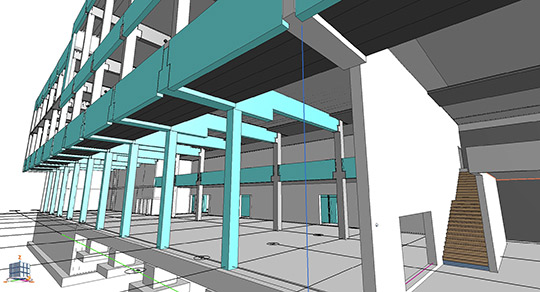
(Photo: Glass GmbH)
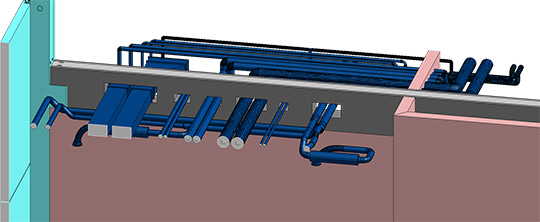
(Photo: Glass GmbH)
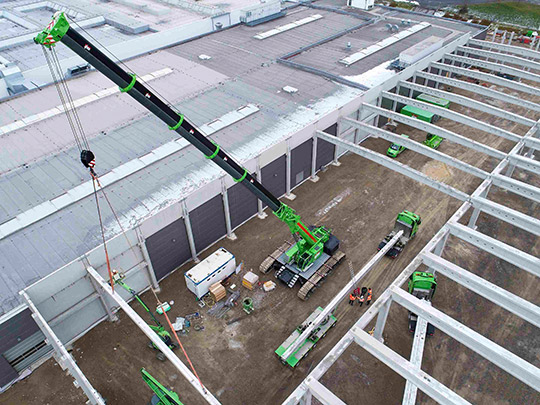
(Photo: Glass GmbH)
According to Böck, Glass Bauunternehmung is also already benefiting from faster and more accurate calculations and easier cost and schedule control. Those involved in the project can access all the information required for planning, production planning, execution and assembly, which significantly improves transparency and coordination between departments. Target/actual comparisons and performance reports can be created more easily using the visual 3D model. It is also easier for the billing department to record and bill services already rendered".
A link between the components of the 3D model and the specifications items, the costs and deadlines from work preparation and the ERP system is also being planned. This streamlines further processes and enables, for example, construction process simulations or automated specifications creation. But Böck also knows the challenges: "Building owners are happy about 3D models and visualizations, but they don't want to spend more money on them. Architects and specialist planners often lack the will to carry out planning consistently in 3D, as changes in 3D are more complex than in 2D".
Other challenges include the heterogeneous software landscape and information losses during data transfer. Model-oriented planning is currently used as Little Open BIM at Glass Bauunternehmung. This means that building data generated in-house is also exchanged with other trades or departments via the IFC interface. The medium and long-term goal is Big Open BIM, i.e. interdisciplinary work on the digital building model with different software solutions and project partners. According to Böck, however, one prerequisite for this is that the other project participants also plan in 3D: "Unfortunately, we have to realize that architects are either not yet planning in 3D at all - and if they are, the models are not kept up to date. This is why collision checks between the architectural model and the shell and structural model have not been possible to date," says Böck.
How do planning processes work in practice?
Currently, data consistency in structural and precast planning is still somewhat limited because the planner often does not provide a 3D model. "If the architect has planned the building in 3D, we naturally request an IFC file so that we can compare it with our model. However, the structural design is still running in parallel without a 3D model connection, because we have not yet found suitable structural analysis software for our precast elements that can be used to transfer and play back data from a 3D model," says Böck regretfully. Details and junctions are coordinated with the structural engineer in advance.
Parallel to the 3D modelling, other employees generate the 2D overview plans from the 3D model. These are sent to architects and specialist planners as a PDF file for coordination as well as in the form of a 3D PDF and an IFC file for model comparison. Responses to the reconciliation usually come via entries in the 2D plans. The reinforcement can usually be planned in parallel with the model creation, as soon as the individual precast elements are completely modelled. "We always try to create the first reinforcement plans as perfectly as possible, as we can generate the other element plans from them very quickly," reveals Böck.
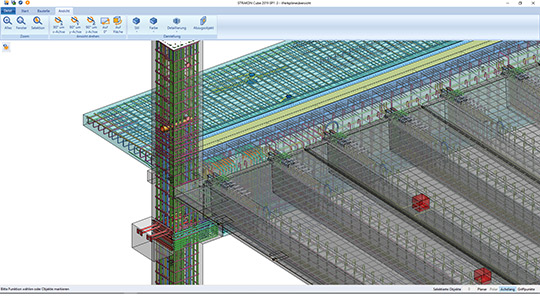
(Photo: Glass GmbH)
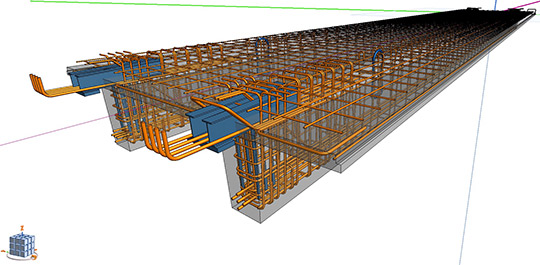
(Photo: Glass GmbH)
However, his team is dependent on the other project participants for the execution of complete BIM projects. Provided that they are provided by the planners, 3D models are simply superimposed as an IFC file with their own STRAKON model. Any deviations and conflicts quickly become visible. With regard to data exchange with other trades, Böck recommends test runs to see what the model will look like after the exchange and which properties will be retained: "You have to approach it step by step, because BIM is a constant learning process".
In the meantime, 80 percent of the glass design department has switched to the BIM planning method. All others can at least already model in three dimensions and derive 2D plans from this. "Overall, the switch has worked much better than we originally thought. Since 3D planning is a prerequisite for BIM, we have created a basis and will now continue to promote and support the implementation of BIM in our company step by step," says Böck, explaining his strategy. However, Böck is convinced that the full benefits of BIM will only really come to fruition when all project participants consistently work with the planning method. Only then is it complete and makes work easier for all those involved.

(Photo: Glass GmbH)
What should beginners and newcomers consider?
What should you consider when selecting and switching from 2D to 3D and BIM? What are the challenges? What mistakes should be avoided? Böck knows the answers and gives tips: Don't rush program selection and involve the later users, because their motivation comes first. It is also important that employees have a positive attitude towards new things and are open to new ways of working. For this reason, 3D and BIM should be introduced step by step and in groups so that nobody is overburdened. "Young employees in particular have a positive attitude towards new ways of working. Thanks to them, a small wave of euphoria swept through the entire department and everyone wanted to switch to 3D," recalls Böck.
The timing and planning of the changeover are also important. Böck advises: "Switching in smaller groups of about four to six people each in order to maintain day-to-day business in the company. The person in charge should be removed from day-to-day business so that he or she can concentrate fully on the changeover". He also recommends information events and trade fairs as well as specialist literature on the subject of BIM as further aids to getting started.
Background information
Glass GmbH Bauunternehmung: Founded in 1948, the Glass group of companies employs around 750 people at its locations in Mindelheim, Munich, Bad Wörishofen, Leipzig and Berlin. The company, which is active throughout Europe, focuses on industrial construction, building construction and turnkey construction, the construction of paper mills as well as civil engineering and bridge construction.
Further informationen: www.glass-bau.de

What Does Working in a BIM Project Actually Look Like?
You Will Experience This at a Free Online Live Presentation of STRAKON With Our Construction Experts!
Ask for an appointment right here.
STRAKON Application Areas
- Construction Engineering
- Structural Design
- Structural Precast Parts
- Semi Precast Parts
- Architecture for Structural Engineers
- BIM
- Interfaces
More about BIM Planning
Experience STRAKON in Action
Why STRAKON from DICAD for structural engineers?
BIM planning
Visualization of BIM projects (DE)
Watch VideoBIM - Building Information Modeling
What is BIM?
BIM stands for Building Information Modeling. This planning process focuses in particular on cost security, adherence to schedules, quality improvement and sustainability.
Learn more about the topic "BIM":


